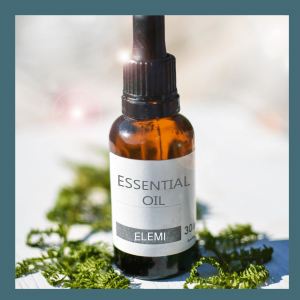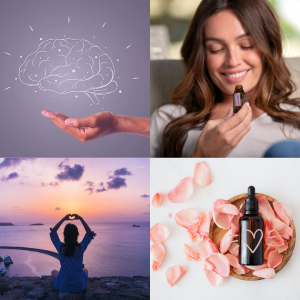
Elemi essential oil is often overlooked because it is not well-known. Unlike members of its botanical family (Burseraceae), such as frankincense and myrrh, elemi doesn’t get the attention to its benefits it deserves.
I tend to befriend the underdog essential oils, and elemi oil is no exception.
In my latest post and video, I explore elemi essential oil, Canarium luzonicum, in detail.
I discuss its impressive pedigree and its unique synergy of a combination of molecules that merge the resinous oils with citrus characteristics (a high content of limonene).
Similar to kunzea and mountain savory, elemi essential oil is a single oil that acts more like a blend. Elemi oil contains a combination of sesquiterpenes and monoterpenes within its array of approximately 40 different compounds. *
Based on the characteristics of this oil’s constituents, the clinical trials with some of its main compounds, its traditional use, and the preliminary research, elemi oil has earned its place on any oil lover’s shelf.
Learn more in my review article of elemi essential oil. Topics covered include its:
- History
- Characteristics and properties
- Chemical makeup and other main constituents
- The essential oil’s mechanisms of action
- Applications
- Uses
- Safety information
Click here to read more about elemi essential oil.
Have you used elemi oil?
Please share your experience and comments below.

Essential Oils Resources
Personalized essential oils consults
The elemi oil I use with myself and clients
Stay Connected! Sign-up for my weekly newsletter.
Free resources and more education on essential oils are available to you here.
Stay tuned for an upcoming opportunity that can support you in holistic mind-body-heart-soul healing. (Join my newsletter below to learn more.)
This material is for information purposes only and is not intended to diagnose, treat, or prescribe for any illness. You should check with your doctor regarding implementing any new strategies into your wellness regime. These statements have not been evaluated by the FDA. (Affiliation link.)
This information is applicable ONLY for therapeutic quality essential oils. This information DOES NOT apply to essential oils that have not been tested for purity and standardized constituents. There is no quality control in the United States, and oils labeled as “100% pure” need only to contain 5% of the actual oil. The rest of the bottle can be filled with fillers and sometimes toxic ingredients that can irritate the skin. The studies are not based solely on a specific brand of an essential oil, unless stated. Please read the full study for more information.



